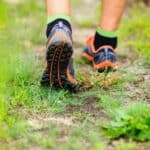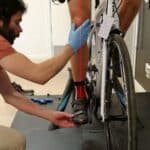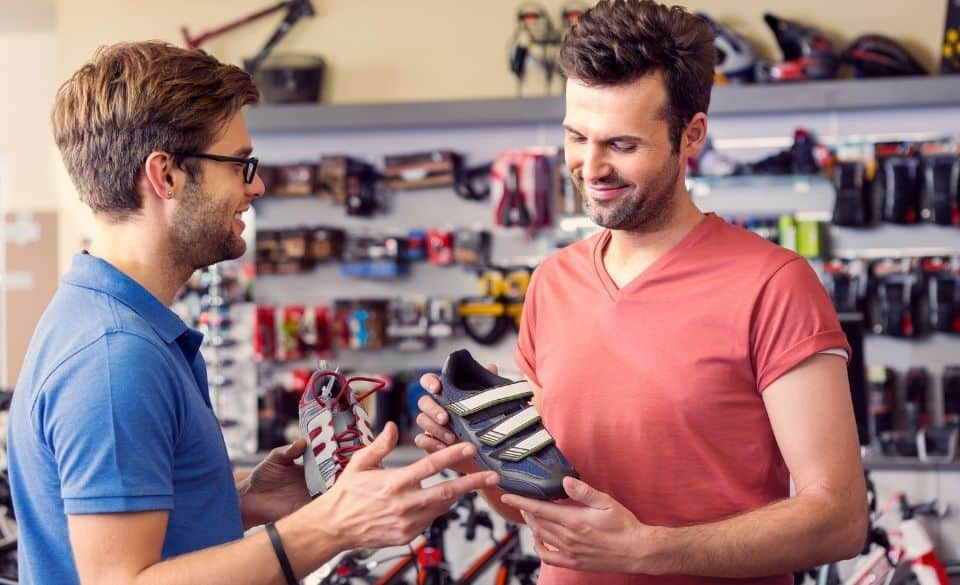
Foot Pronation & Supination In Cycling – Understanding Cycling Cleat Position
Page Contents
The effects of over-pronation and supination while running are well understood. However, when it comes to foot pronation and supination in cycling, there isn’t the same amount of information available.
So, since foot pronation and supination in cycling are largely related to the position of your cleats, continue reading to learn more about the correct cleat position.
Foot Pronation & Supination While Cycling – A Complete Guide
Foot pronation and foot supination in cycling are relatively common among cyclists. However, since cycling isn’t a load-bearing exercise like running, people are less likely to feel the effects of pronation or supination as much as runners do.
However, that doesn’t mean you should ignore it though. Both pronation and supination affect the alignment of the knees when pedaling. Thus, when ignored can cause pain around the sides of the knee.
If you don’t know what supination or pronation is, it is basically:
Pronation: Internal rotation of the foot.
Supination: The external rotation of the foot.
Both can be caused by lack of arch support, ill-fitting cycling shoes, saddle height, or cleat position.
To help prevent supination and pronation in cycling it is important to stabilize the arch of the foot from collapsing under load. While using arch support (or custom inner soles) won’t completely fix pronation or supination problems, it will help with knee alignment and allow you to set up your cleat position correctly.
So if you experience foot pronation or supination while cycling, book in to see a qualified bike fitter. They can then check your setup and see whether it is causing any alignment or biomechanical issues on the bike.
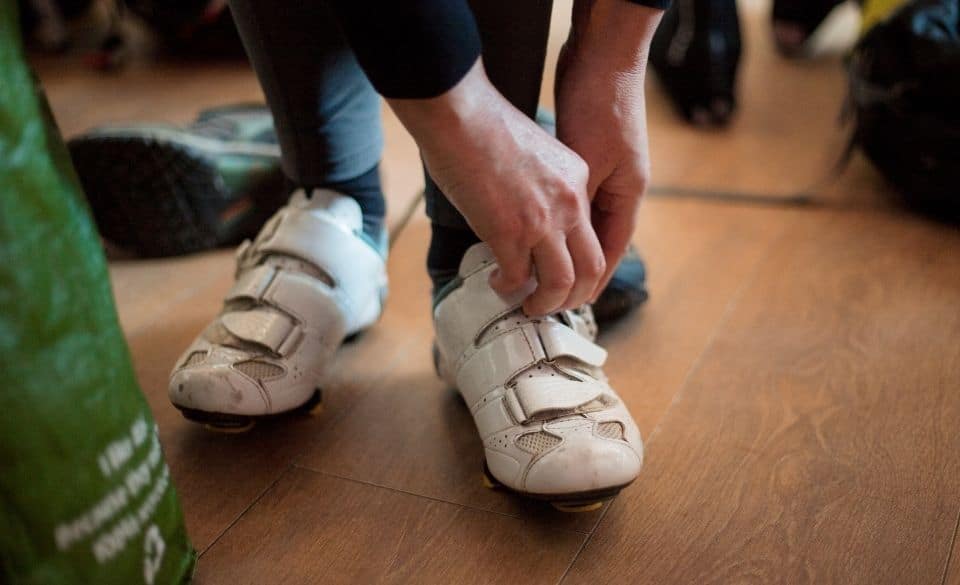
Understanding Cycling Cleat Position
Your cycling cleat position is just as important as your saddle height, and just like saddle height, if you get your cleat position wrong, it can cause you discomfort, pain, and even injury.
There are three basic settings when it comes to cycling cleat position. One is getting the correct angle of the cleats setup, and the second is the fore-aft (forward and back) position of the cleats. The third setting is the side-to-side measurement which is largely affected by stance.
If all settings aren’t set up correctly, they can cause knee pain and even Achilles injuries. Also bear in mind that most likely each foot’s cleat position will most likely be different based on your biomechanics.
So how do you know how to correctly set up your cycling cleat position?
Back some years cleat position would be based under the ball of the foot. Since then study and data have shown that moving the cleat further behind the ball of the foot provides more support and stability throughout the pedal stroke. It also helps to relieve excess stress to the Achilles and calf muscles by reducing the flexion of the foot.
To setup your cleat position, start by:
1. Remove cleats from your shoe.
2. Put on your shoes and locate the ball of your foot.
3. Mark the ball of your foot.
4. Align the center of the cleat with the ball of your foot.
5. Move the cleat towards the back of the shoe by 0.5-1cm.
While this will method will put you in the ballpark of a good fore-aft cleat position. It is only recommended as a guide. Other factors like saddle height and foot size can play a role in the fore-aft position of your cleats.
Once you have the fore-aft setup correctly you can then look at the angle and side-to-side measurement of the cleats.
Moving cleats side to side influence how close the foot will be to the crankarm (Q factor). As a basic rule of thumb, move your cleats inwards if you have a wide stance when standing (or duck-footed). This will move your foot further away from the crank arm.
If you have a narrow stance and good alignment, you made be able to run a smaller Q factor by moving the cleats to the outside of the shoe, bringing the foot closer to the crank arm.
Once you have set up the fore-aft and side-to-side position of your cleats, you can then look at the angle of the cleat position.
The angle of your cleats is important to help keep the knee in line during each pedal revolution. If you incorrectly set up the angle it will place more stress on the knee by forcing it to align wrongly.
Below is a great video clip explaining basic cycling cleat position.
Peroneal Tendonitis & Cleat Position
Although the most common causes of peroneal tendonitis are overuse or muscle sprains, Peroneal tendonitis and cleat position are also linked.
If you’re a cyclist that supinates when pedaling or has high arches, you are more likely to stress the peroneal tendons of the foot. This often causes inflammation of the tendons which can keep you out of cycling for some weeks.
First, it is important to find out how much each foot is supinating during the pedal stroke. Then either look at fitting inner soles with arch support or cleat wedges to help align the foot correctly.
Both forms of support will help align the foot correctly and take undue stress off the Peroneal tendons.
Peroneal tendonitis and cleat position are largely connected, so it is important to have the correct cleat position with the right inner sole supporting the arch. If arch support doesn’t help relieve the pain or discomfort caused by Peroneal tendonitis and cleat position, book in with a qualified bike fitter. They can then help look at correcting the angle of your foot with some cleat wedges.
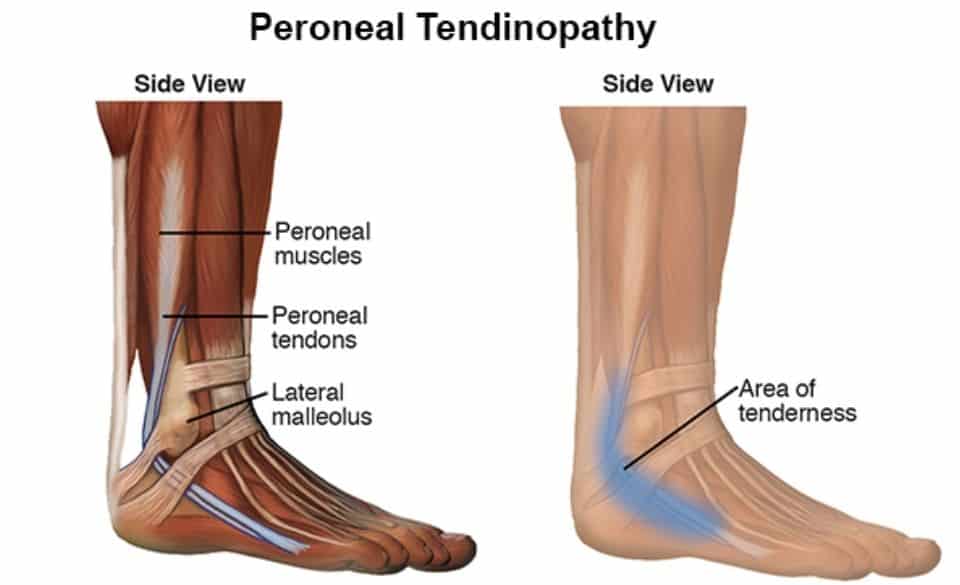
Achilles Pain & Cycling Cleat Position
If you are struggling with Achilles pain on the bike, it is most likely your cycling cleat position is wrong. Often people that struggle with Achilles pain while cycling has their cleat position too far forward. This allows more leverage of the foot, thus adding more stress to the Achilles tendon.
However, cleat position might not be the only cause, as seat height plays a major role in how much stress is placed on the tendon. So before thinking that your Achilles pain and cycling cleat position is connected, first check your saddle height and eliminate that problem first.
If you are then still struggling with Achilles pain, start by checking the position of your cleat by measuring where the cleat is located in relation to the ball of your foot.
If the center of the cleat is ahead of the ball of the foot, start by moving your cleat position further back so that you are 0.5-1cm behind the ball of your foot. This will help stabilize the foot more and prevent overuse of the Achilles tendon.


